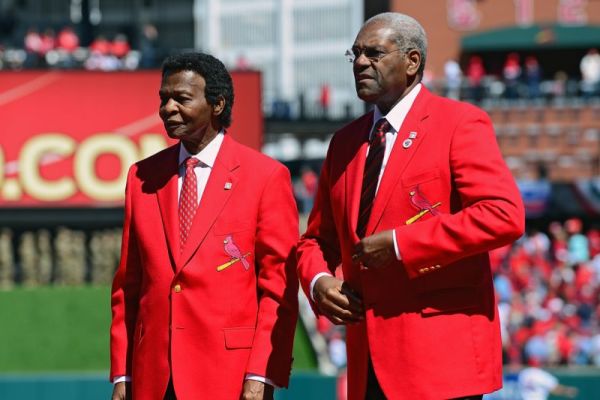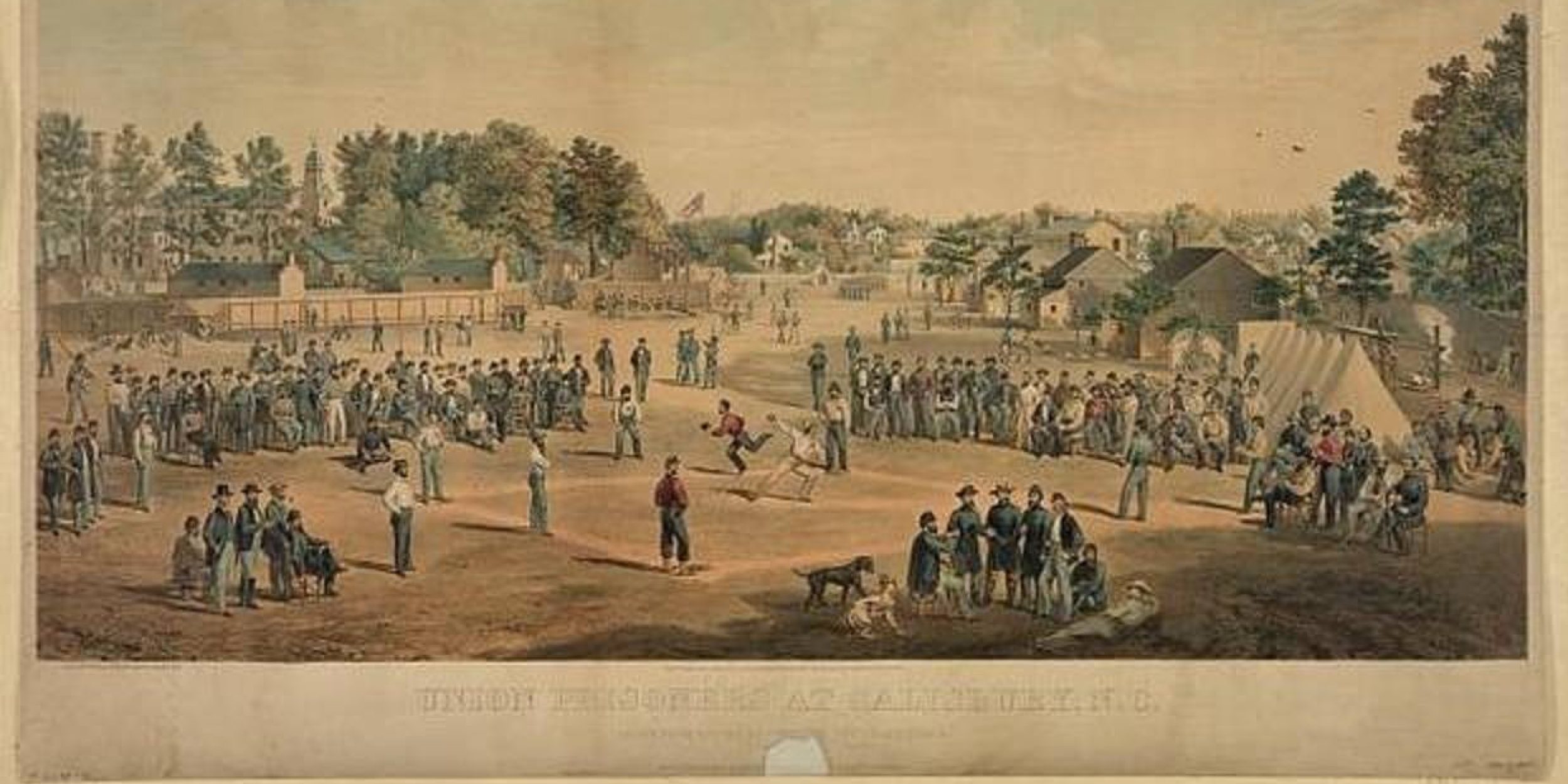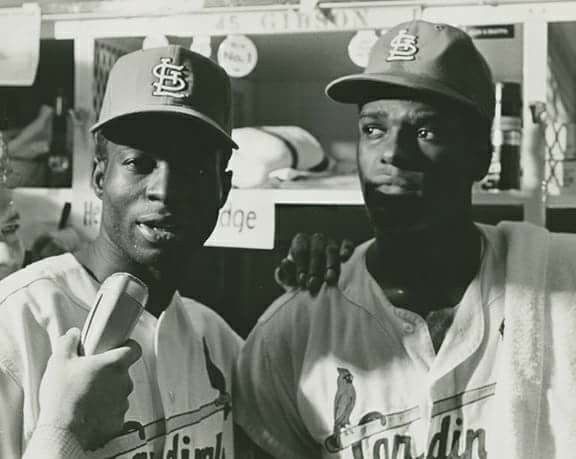Baseball History Comes Alive Now Ranked #2 by Feedspot Among All Internet Baseball History Websites and Blogs!
Guest Submissions from Our Readers Always Welcome!
THE BASEBALL HISTORY COMES ALIVE BLOG
Please note: As we compose new blog entries, we will now send each one out to all our subscribers as we post them. Here’s a link to see the entire Blog Archives
January 26, 2021
SAYING GOODBYE TO OUR HEROES
The death of Hank Aaron caused a ripple effect throughout not only the baseball world, but in many other quarters as well. The man they called “The Hammer” or “Hammerin’ Hank,” was not only one of the great baseball players of all time, but also a man of integrity, grace, and honor. He will not only be missed as a ballplayer, but as a human being, and he was celebrated as such in the flood of tributes that flowed in as soon as the sad news spread.
For longtime baseball fans like myself, the news of his passing triggered a flood of memories, as well as the realization that Aaron’s death was preceded by the passing of eight other great Hall of Fame players over the past year. The names ring out with a personal familiarity since we knew each one so well. Kaline, Seaver, Brock, Gibson, Ford, Morgan, Niekro and Sutton. Aaron makes number nine, ironically the same number as players on a baseball field. And they recently picked up their manager in Tommy Lasorda. Though older fans may not have met any of the players personally, they still seem in some ways like old friends. And the fact that they are now gone makes you feel as if a little part of yourself is gone, too.
In some ways, baseball is like a ticking clock on our lives. For example, I was just seven years old when Whitley Ford was called up to the Yankees in 1950 and by the time he retired in 1967, I was 25. So he was part of my baseball life from childhood to adulthood. When Hank Aaron made his debut in 1954 I was still 11 years old. When he called it quits in 1976, I was 34. Despite all the changes in my life over those years, baseball and Hank Aaron were a constant, something I could depend on and enjoy year after year.
Tom Seaver was perhaps the key player on the Miracle Mets team of 1969, a team I not only followed but wrote about as the sports editor of a daily Connecticut newspaper. I also had occasion to interview Tom Terrific. As for Bob Gibson, he was simply my favorite pitcher to watch. I loved everything about him, from his pitching motion to his ferocious competitiveness. He was the antithesis of everything that is wrong with pitching today. I’d love to see a manager try to take him out after 5.1 innings, saying he couldn’t trust him to go through the lineup a third time. God help that manager.
Brock, Morgan, Niekro, and Sutton were all players I watched for the entire duration of their careers. That’s what makes it so difficult to accept that they are gone and to say goodbye. In my mind’s eye – and I’m sure in many of yours as well – they’re all still young and out on the diamond doing the things they did so very well. As kids, and even in our formative years, we knew all the batting stances and pitching motions of our heroes, mimicking them in our own sandlot games or just for the fun of it in our backyards. The bottom line: these players and others were all big parts of our lives in a way only a real baseball fan can understand.
That’s another reason it’s so hard to let go. The reality is that we know our childhood, and even young adult heroes, are no longer young. Neither are we. But there’s a kind of comfort knowing they are still out there. And when we see them being interviewed or at the Hall of Fame ceremonies, it always triggers those special baseball memories of them performing on the field and how it made us feel watching their greatness.
So each time one of these special players – or even a journeyman player we might have really liked and rooted for – departs this world it hurts us a little bit, too. Not in the way it would for someone in our own family or a close friend. It hurts because the life cycle of baseball so closely mirrors our own life cycle. And the death of one of our baseball heroes always gives us a not-so-subtle reminder. Nobody is immortal. May they all rest in peace.
Bill Gutman
As always, we enjoy reading your comments
Here’s a link to see the entire Blog Archives


Well written, your sentiments mirror mine. My fervent wish is for the computer to get out of baseball. It was and is a great game. We do not need to change anything. Those wonderful players that have recently passed away are etched in my brain. Of course the loss of Tommy Lasorda really hurts, he was the greatest ambassador of the game of baseball and cannot be replaced. Here is hoping your drive to enshrine Gil Hodges in the Pantheon of baseball greats will be successful, he is certainly deserving.
Thanks Dennis. Agree with out completely about analytics and what it has done to the game. Also agree on Gil. He was outstanding as a player and manager and fully deserves to be in the Hall.
Gil Hodges is definitely the most deserving of all the current nominees!!! HE MUST GET IN!!!
Hopefully, he will, James. It’s just a shame that it’s taking so long.
Well said and we’ll written, Bill. I completely agree that we tie our own mortality to our heroes.
I first became impacted by this reality back in 1995 when Mickey Mantle died. He was the same age as my mother and they both died relatively young within three months of each other.
It’s the same with any famous person, especially if they die young. We have a picture in our mind of Mantle in our mind, forgetting that if he was still with us, he would be turning 90 this year (so won’t Willie Mays-sort of a sporting version of The Picture of Dorian Grey- in reverse)!!!
Hard to believe Mickey would have been 90 this year, Paul. Of course, so will Willie and he’s still with us. In some ways it still seems like yesterday when they were still playing. You’re right about other famous people. I guess the same reaction with actors. When I watch old movies from the 1930s and even the 1940s I know that those stars are no longer with us. But it’s the actors who are close to our own age. Like the baseball stars, we still think of them as younger than they are and when you see or hear that one of them is 80 or has died at 82, it almost comes as a surprise. But I guess that’s the natural cycle of life and we all experience similar things one way or another.
Beautifully done, Bill. And, as Paul says, our own mortality is brought front and center with your great essay. In fact, a little too front and center. Better get off that before I start taking my pulse!
Like your timeline with the departed players. Mantle also comes to mind for me, in 1951. I tuned in one afternoon to watch the Yankees, curious about this 19 year-old kid who was so ballyhooed in spring training. Mick tried a drag bunt batting left, of course, in his first plate appearance. He once said he had a good home run swing from the left side but absolutely no bat control. He couldn’t even play pepper left handed. So, sure enough, the drag bunt turned into a line drive one-hopper to the pitcher. The TV camera showed the hurler gloving the ball and firing to first with no wasted motion. Before the camera panned to first base, I figured I’d see Mantle peeling off about 25 feet from the bag, back to the dugout, out by a mile. What I saw was astounding. The play to first was…BANG! BANG! Mickey was out by an eyelash! He was shot out of a cannon–never saw anything like it.
On the next at bat, Mantle singled to left, batting right. And stole second on a pitch out, standing up! This was before he hurt his knee in the World Series with the Giants, that year.
Yes, Monte, Gil belongs!
Thanks, Bill. This one came from both the head and the heart. Our memories of players we saw when young are so vivid that we almost think they’re forever young, but alas they’re not. There sure are a lot of what-could-have-beens with Mickey. His natural talent was so apparent and his speed mind bloggling. Knee and leg injuries really compromised his greatness. Had he been healthy and not had the fatalistic attitude he had and had taken better care of himself who knows what he could have done and what his numbers would be. He had one of the beautiful and powerful swings I have ever seen. Can still picture it in my mind which, I guess, is a good thing.
They had film on Mantle in the movie, Damn Yankees. They showed Mick taking a cut or two at the plate, and you could feel the power and magnetism. You’re right, Bill, his swing was right up there with Ruth and Williams for sheer beauty and awesome power.
Loved the movie. Nobody could touch Gwen Verden or Ray Walston. Even Tab Hunter did a nice job…that is until he threw the baseball. Alas, a ball player he was not!
Yeah, you can’t believe many of these people are no longer with us. Slightly unnerving, as my birthday is less than a week away
Happy Birthday in advance, Bill. I certainly remember the people you mention here, even Tab Hunter. So many in the old baseball movies were obviously not baseball players. At least the more recent baseball movies are a bit more realistic. You won’t have an all-star team of Ronald Reagan, William Bendix, Gary Cooper, James Stewart and others. And how about Anthony Perkins as Jimmy Piersall?
The best thing you can say about Tab Hunter throwing a baseball is–Anthony Perkins was worse!
Loved Karl Malden as the domineering father in “Fear Strikes Out.” When Perkins (as Piersall) proudly says, “.342, dad, second in the American Association.” To which his father responds, “That’s not number one, is it, Jim.” Then when his father visits him in the hospital, Piersall shouts, “Get him out! Get him out!”
The unintentional comedy in the movie was worth the price of admission.